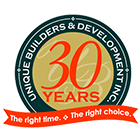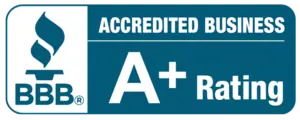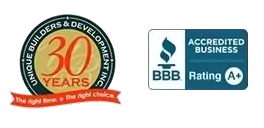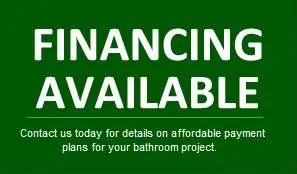Concrete Board For Showers: Installation And Maintenance Guide
Tags
Concrete Board for Showers| Types of Concrete Board | Waterproofing Concrete Board
When it comes to bathroom remodeling in Houston, constructing a shower is not only a visually appealing option but also a durable and long-lasting one, choosing the right materials is essential.
One such material that has gained popularity in recent years is the concrete board. Concrete board is a versatile and reliable choice for shower installations, known for its strength and resistance to water damage.
In this comprehensive guide, we will explore everything you need to know about concrete board for showers, from installation to maintenance
Why Choose Concrete Board for Showers?
Concrete board, also known as cement board or backer board, is a building material that is perfect for shower installations because it is made for damp and high-moisture locations.
The following are some of the main justifications for using concrete board in your shower project:
1. Water Resistance
The concrete board is engineered to resist water and moisture effectively. Unlike traditional drywall, which can become damaged when exposed to water over time, the concrete board remains structurally sound and doesn’t warp, swell, or deteriorate.
2. Durability
One of the primary benefits of using concrete board in showers is its exceptional durability. It can withstand the daily wear and tear that a shower is subjected to, including temperature changes, moisture, and impacts, without compromising its integrity.
3. Mold and Mildew Resistance
Concrete board is inherently resistant to mold and mildew growth. Its composition and lack of organic materials make it an unattractive environment for these common bathroom nuisances, contributing to a healthier and cleaner shower space.
4. Easy Installation
Installing concrete boards is a relatively straightforward remodeling process, especially for those with basic DIY skills. Its rigid structure makes it easy to work with and ensures a stable surface for tile or other finishes.
5. Compatibility
Concrete board is compatible with various tile adhesives and mortar types, making it suitable for a wide range of design preferences and styles.
You can achieve the look you desire while maintaining the structural integrity of your shower.
Advantages of Concrete Board for Showers
| Advantages | Description |
| 1. Water Resistance | Concrete board is engineered to resist water and moisture effectively, preventing damage over time. |
| 2. Durability | It can withstand daily wear and tear, including temperature changes and impacts, without deteriorating. |
| 3. Mold and Mildew Resistance | Concrete board is inherently resistant to mold and mildew growth, promoting a cleaner shower environment. |
| 4. Easy Installation | Installation is relatively straightforward, making it suitable for DIY projects with basic skills. |
| 5. Compatibility with Tile Finishes | It works well with various tile adhesives and mortar types, allowing for versatile design options. |
Installation Steps for Concrete Board in Showers
Installing the concrete board in a bathroom shower is a critical step in ensuring the longevity and performance of your bathroom. Follow these steps to install the concrete board correctly:
-
Gather Materials and Tools
Before starting the installation, ensure you have all the necessary materials and tools. You will need concrete board sheets, a circular saw or carbide-tipped scoring knife, a drill with cement board screws, a trowel, a level, and tile adhesive.
-
Prepare the Shower Studs
Check that your shower studs are properly spaced and level. Ideally, they should be 16 inches apart in the center. If necessary, adjust the studs to meet these requirements.
-
Measure and Cut
Measure the shower walls and cut the concrete board sheets to fit the dimensions of your shower. Use a circular saw with a carbide-tipped blade or a scoring knife. Be sure to wear appropriate safety gear, such as goggles and a dust mask, when cutting.
-
Attach the Concrete Board
Starting from the bottom, secure the concrete board sheets to the shower studs using cement board screws. Place screws every 8 inches along the studs, ensuring that the sheets are flush against the wall and level.
-
Leave Gaps
Leave a 1/8-inch gap between the edges of the concrete board sheets and the shower pan or floor to allow for expansion and contraction. Fill these gaps later with a waterproof sealant.
-
Tape and Seal Joints
Use fiberglass mesh tape to cover the seams where the concrete board sheets meet. Apply thin-set mortar over the tape and smooth it out with a trowel. This step helps create a waterproof barrier and prevents water infiltration.
-
Apply Tile Adhesive
Once the concrete board is securely in place, you can apply tile adhesive directly to the concrete board surface and install your chosen shower tiles.
Tile Installation
Follow the manufacturer’s instructions for the specific tile adhesive and grout you are using. Allow the adhesive to cure before grouting and finishing the shower.
-
Seal the Tiles
After the tiles are in place and the grout has dried, seal the grout lines and any gaps with a quality grout sealer to enhance water resistance and prevent staining.
Also check: How Long Does It Take To Tile A Bathroom?
Maintenance Tips for Concrete Board Showers
To ensure that your concrete board shower remains in excellent condition over the years, it’s essential to perform regular maintenance. Here are some tips to keep your shower looking and functioning at its best:
- Regularly clean the shower surfaces to prevent soap scum buildup and mold growth. Use a mild, non-abrasive cleaner and a soft cloth or sponge. Avoid harsh chemicals that can damage the grout and tiles.
- Proper ventilation is key to preventing moisture buildup in your shower. Ensure that your bathroom has a functioning exhaust fan or window to help remove excess humidity.
- Inspect the grout lines periodically and reseal them as needed. Grout sealer helps protect against water infiltration and staining.
- Check the caulk around the shower edges and seams. If you notice any cracks or gaps, remove the old caulk and reapply a fresh bead of waterproof caulk to prevent water from seeping behind the tiles.
- Avoid using abrasive cleaners or scrubbing tools that can scratch the tile surfaces. These scratches can create tiny openings for moisture to penetrate the concrete board.
- Address Leaks Promptly: If you notice any water leaks or damage to the concrete board, address them promptly. Water damage can compromise the integrity of the board and lead to more extensive and costly repairs if left unattended.
- Periodically inspect the entire shower area for any signs of wear and tear, including loose tiles, cracked grout, or damaged concrete board. Early detection and repair can prevent larger issues down the line.
Concrete Board Is an Excellent Choice for Shower Installations
Concrete board is an excellent choice for shower installations due to its durability, water resistance, and resistance to mold and mildew. Proper installation and maintenance are essential to ensure your concrete board shower remains in optimal condition for years to come.
By following the steps outlined in this guide and implementing regular maintenance practices, you can enjoy a beautiful and long-lasting shower that enhances the functionality and aesthetic of your bathroom.
Whether you’re tackling a DIY project or working with professionals remodelers, the concrete board is a reliable option that can stand up to the demands of daily use and moisture exposure in your shower.






















